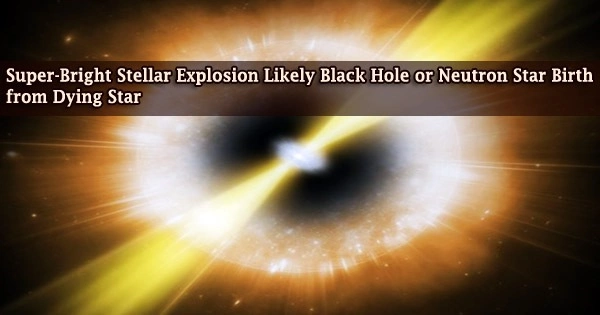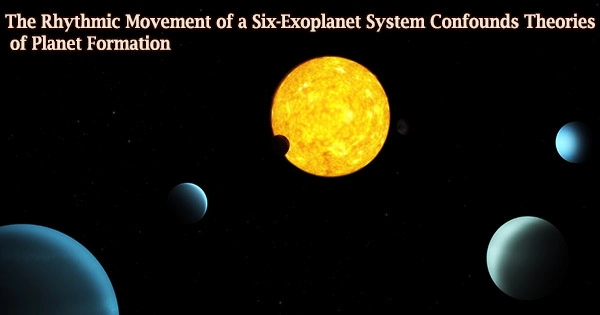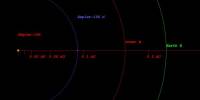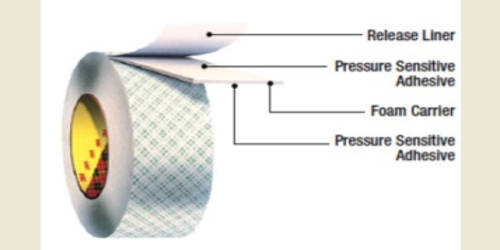In June 2018, a spectacular blue flash from a spiral arm of a galaxy 200 million light years away was detected by telescopes all across the world. Even though the intense explosion was considerably faster and brighter than any stellar explosion that astronomers had previously seen, it initially seemed to be a supernova.
Astronomers have classified the signal, originally designated AT2018cow procedurally, as a fast blue optical transient, or FBOT, which is a brilliant, brief, event of unknown origin.
Now, a team led by MIT has discovered convincing proof of the signal’s origin. The researchers also noticed a dazzling optical flash and a pulse of high-energy X-rays that resembled a strobe. They followed hundreds of millions of these X-ray pulses back to the Cow and discovered that they happened at regular intervals of 4.4 milliseconds over the course of 60 days.
The scientists determined that the pulse frequency indicated that the source of the X-rays must have been an entity no wider than 1,000 kilometers and no heavier than 800 suns. Such an item would be regarded as compact by astronomical standards, similar to a miniature black hole or neutron star.
Their research, which was just published in the journal Nature Astronomy, strongly suggests that AT2018cow was probably created by a dying star that collapsed and produced a compact object like a black hole or neutron star as a result. The infant object kept gobbling up the surrounding matter and devouring the star from the inside, which caused a huge explosion of energy.
“We have likely discovered the birth of a compact object in a supernova,” says lead author Dheeraj “DJ” Pasham, a research scientist in MIT’s Kavli Institute for Astrophysics and Space Research.
“This happens in normal supernovae, but we haven’t seen it before because it’s such a messy process. We think this new evidence opens possibilities for finding baby black holes or baby neutron stars.”
“The core of the Cow”
One of the “astronomical transients” found in 2018 is AT2018cow. Its name’s use of the word “cow” is a coincidental result of the astronomical naming process (for instance, “aaa” refers to the very first astronomical transient discovered in 2018).
We have likely discovered the birth of a compact object in a supernova. This happens in normal supernovae, but we haven’t seen it before because it’s such a messy process. We think this new evidence opens possibilities for finding baby black holes or baby neutron stars.
Dheeraj “DJ” Pasham
The signal is one of the few dozen FBOTs that have been observed in real-time, and it is one of just a few of such signals. A study in Hawaii discovered its strong flare, which was up to 100 times brighter than an usual supernova. This discovery promptly alerted observatories all over the world.
“It was exciting because loads of data started piling up,” Pasham says. “The amount of energy was orders of magnitude more than the typical core collapse supernova. And the question was, what could produce this additional source of energy?”
Several theories have been put forth by astronomers to explain the extraordinarily intense signal. It might, for instance, have been the offspring of a black hole created in a supernova. Or it might have happened as a result of a passing star’s material being ripped off by a middle-weight black hole.
However, the information gathered by optical telescopes hasn’t conclusively identified the signal’s origin. Pasham questioned whether the X-ray data held the key to the solution.
“This signal was close and also bright in X-rays, which is what got my attention,” Pasham says. “To me, the first thing that comes to mind is, some really energetic phenomenon is going on to generate X-rays. So, I wanted to test out the idea that there is a black hole or compact object at the core of the Cow.”
Finding a pulse
The research team used X-ray information gathered by NASA’s Neutron Star Interior Composition Explorer (NICER), an X-ray monitoring telescope located on board the International Space Station. About five days after the Cow was discovered by optical telescopes, NICER began observing it.
Over the next 60 days, the signal was tracked. Pasham and his coworkers obtained and evaluated this data from an archive that was made available to the general public.
The researchers searched the data for X-ray signals coming from the vicinity of AT2018cow and determined that they weren’t coming from other sources like instrument noise or cosmic background events. The Cow looked to be emitting bursts at a frequency of 225 hertz, or once every 4.4 milliseconds, according to their analysis of the X-rays.
Pasham seized on this pulse, recognizing that its frequency could be used to directly calculate the size of whatever was pulsing. The size of the pulsing object in this instance cannot be greater than the distance that light travels in 4.4 milliseconds. By applying this logic, he determined that the object’s dimensions must not exceed 1.3×108 cm, or nearly 1,000 kilometers broad.
“The only thing that can be that small is a compact object either a neutron star or black hole,” Pasham says.
The team went on to determine that it must not exceed 800 solar masses based on the energy that AT2018cow released.
“This rules out the idea that the signal is from an intermediate black hole,” Pasham says.
The discovery, according to Pasham, shows that X-ray examinations of FBOTs and other ultrabright occurrences could be a new tool for researching young black holes in addition to pinpointing the origin of this specific signal.
“Whenever there’s a new phenomenon, there’s excitement that it could tell something new about the universe,” Pasham says. “For FBOTs, we have shown we can study their pulsations in detail, in a way that’s not possible in the optical. So, this is a new way to understand these newborn compact objects.”
This research was supported, in part, by NASA.
















